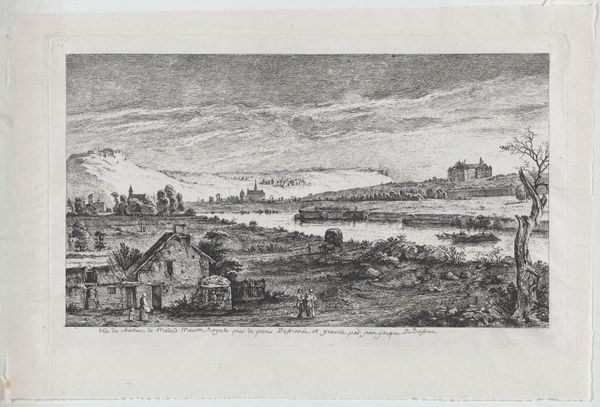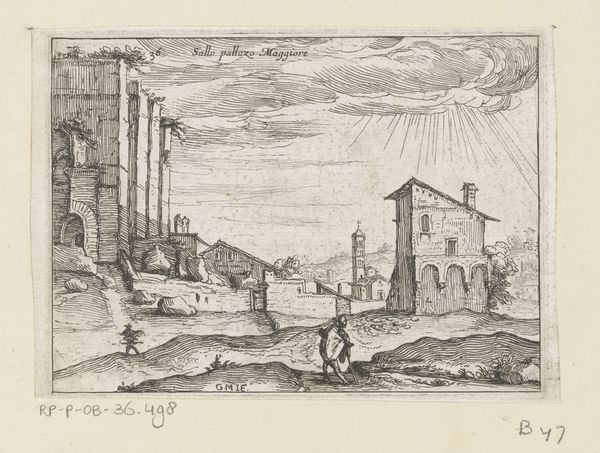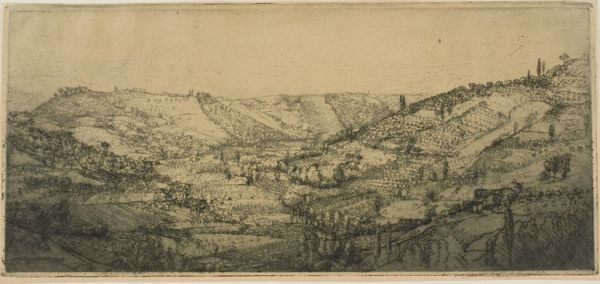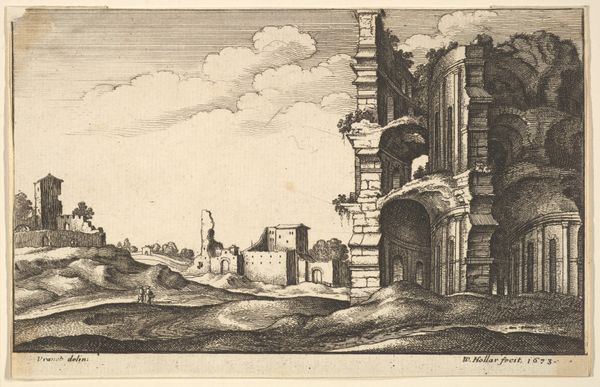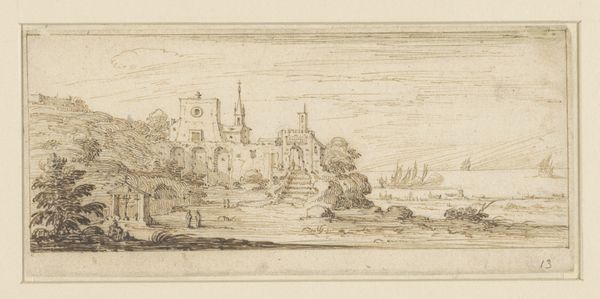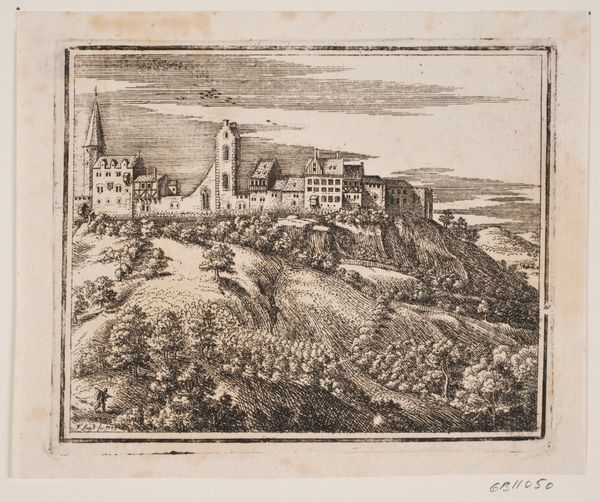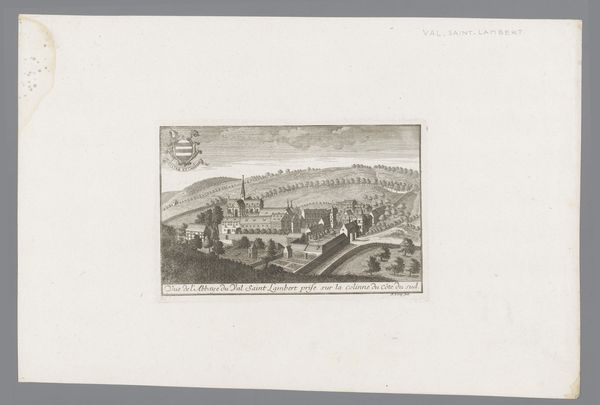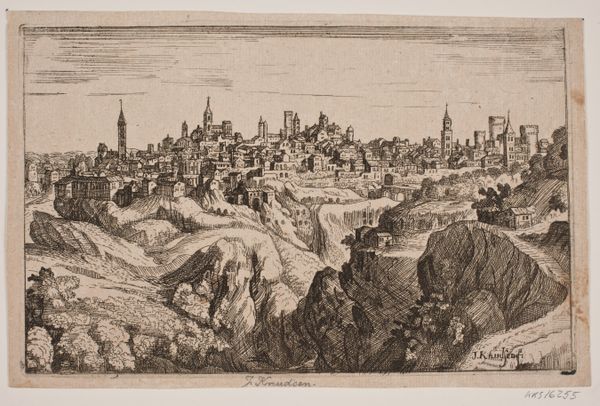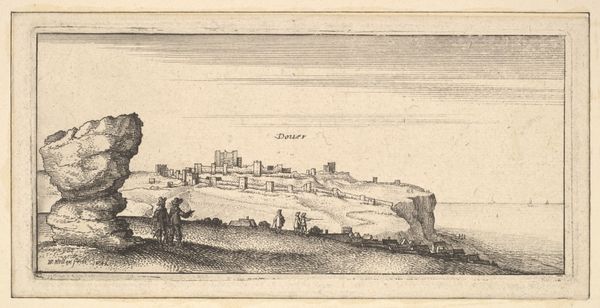
drawing, print, etching, engraving
#
drawing
#
baroque
# print
#
etching
#
landscape
#
cityscape
#
engraving
Dimensions: Sheet: 2 3/8 × 5 1/2 in. (6 × 14 cm) cut on platemark
Copyright: Public Domain
Curator: Here we have "Passau," an engraving and etching by Wenceslaus Hollar, dating roughly from 1652 to 1677. The print presents a panoramic view of the city. What's your initial take? Editor: My initial reaction is quiet admiration. The scale! It's bijou, delicate, but manages to feel monumental at the same time. It almost feels like I’m peering through time. The artist certainly captured the sense of history embedded in stone, even from such a distant vantage point. Curator: It's a wonderful example of Baroque-era printmaking, showing off Hollar's mastery. We see an engagement with the means of reproduction – the etched lines that allow this image to be circulated broadly, potentially shaping how Passau was perceived far beyond its physical boundaries. Consider too how this sort of work functioned almost like an early form of advertising for cities. Editor: Absolutely. It's selling the *idea* of Passau, that carefully composed scene that becomes more than just bricks and mortar. The light and the composition evoke such a wistful feeling; all those tiny buildings, and lives contained within them, reduced to these marks on the paper. It makes one contemplate what history actually represents when reduced to an image like this. A memory? A document? A promise? Curator: Hollar made quite a career out of such representations. We can look at his technique – the precise hatching, the way he articulates different textures of stone, water, cloud – and how that craft enabled these broader social and cultural functions, almost turning it into social commentary. Editor: And doesn't that careful detail just add to the whole allure of the piece? Knowing someone dedicated this kind of loving labor is fascinating. This isn't simply a depiction of a place. It’s infused with feeling, a sensitivity toward not just its look, but its spirit. You see that and think about all the hours – even the conditions – the artist would’ve endured to accomplish such finesse. Curator: Precisely! Examining this print is never just a passive viewing experience, as it draws attention to labor. Hollar also was not isolated, evidenced by "F. de Wit excudit" on the lower-right, as the artwork also showcases collaborations amongst other contemporary printmakers of his time. Editor: Absolutely. Each glance reveals fresh nuances, echoing like murmurs through the ages, don’t you think? The piece isn't just old; it *feels* wise. Curator: I couldn’t agree more, a fitting insight to end on. Thank you.
Comments
No comments
Be the first to comment and join the conversation on the ultimate creative platform.
